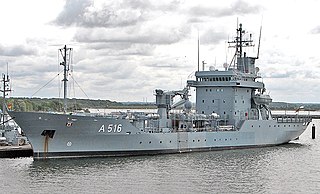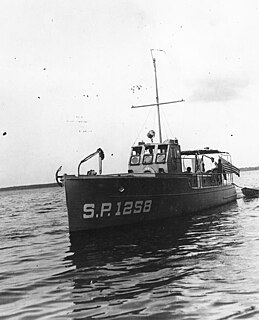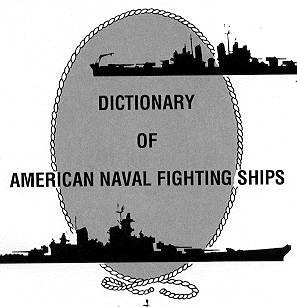| History | |
|---|---|
| Name: | USS High Ball |
| Namesake: | Previous name retained |
| Completed: | 1910 |
| Acquired: | 21 May 1917 |
| Commissioned: | 1 June 1917 |
| Fate: | Returned to owner 21 May 1919 |
| Notes: | Operated as private motorboat High Ball 1910–1917 and from 1919 |
| General characteristics | |
| Type: | Patrol vessel |
| Length: | 45 ft (14 m) |
| Beam: | 6 ft 6 in (1.98 m) |
| Draft: | 2 ft 6 in (0.76 m) |
| Speed: | 35 knots |
| Complement: | 12 |
| Armament: | 1 × machine gun |
The first USS High Ball (SP-947) was a United States Navy patrol vessel in commission from 1917 to 1919.

The United States Navy (USN) is the naval warfare service branch of the United States Armed Forces and one of the seven uniformed services of the United States. It is the largest and most capable navy in the world and it has been estimated that in terms of tonnage of its active battle fleet alone, it is larger than the next 13 navies combined, which includes 11 U.S. allies or partner nations. with the highest combined battle fleet tonnage and the world's largest aircraft carrier fleet, with eleven in service, and two new carriers under construction. With 319,421 personnel on active duty and 99,616 in the Ready Reserve, the Navy is the third largest of the service branches. It has 282 deployable combat vessels and more than 3,700 operational aircraft as of March 2018, making it the second-largest air force in the world, after the United States Air Force.
High Ball was built as a private motorboat of the same name in 1910. On 21 May 1917, the U.S. Navy acquired her from her owner, W. J. Green of Utica, New York, for use as a section patrol boat during World War I. She was commissioned at the New York Navy Yard in Brooklyn, New York, as USS High Ball (SP-947) on 1 June 1917.

A motorboat, speedboat, or powerboat is a boat which is powered by an engine. Some motorboats are fitted with inboard engines, others have an outboard motor installed on the rear, containing the internal combustion engine, the gearbox and the propeller in one portable unit.

Utica is a city in the Mohawk Valley and the county seat of Oneida County, New York, United States. The tenth-most-populous city in New York, its population was 62,235 in the 2010 U.S. census. Located on the Mohawk River at the foot of the Adirondack Mountains, Utica is approximately 95 miles northwest of Albany, 55 mi (89 km) east of Syracuse and 240 miles northwest of New York City. Utica and the nearby city of Rome anchor the Utica–Rome Metropolitan Statistical Area, which comprises all of Oneida and Herkimer counties.

New York, officially the State of New York, is a state in the Northeastern United States. New York was one of the original Thirteen Colonies that formed the United States. With an estimated 19.54 million residents in 2018, it is the fourth most populous state. To distinguish the state from the city in the state with the same name, it is sometimes called New York State.
Assigned to the 3rd Naval District, High Ball served throughout her naval career as ship's tender to the monitor USS Amphitrite (Monitor No. 2) in New York Harbor. For a brief period in late 1918, she was one of two boats named High Ball in U.S. Navy service, the other being USS High Ball (1905).

A ship's tender, usually referred to as a tender, is a boat, or a larger ship used to service or support other boats or ships, generally by transporting people or supplies to and from shore or another ship. Smaller boats may also have tenders, usually called dinghies.

The second USS Amphitrite—the lead ship in her class of iron-hulled, twin-screw monitors—was laid down, on June 23, 1874 by order of President Ulysses S. Grant's Secretary of Navy George M. Robeson at Wilmington, Delaware, by the Harlan and Hollingsworth yard; launched on 7 June 1883; sponsored by Miss Nellie Benson, the daughter of a Harlan and Hollingsworth official; and commissioned at the Norfolk Navy Yard, Portsmouth, Virginia, on 23 April 1895, Captain William C. Wise in command.

New York Harbor, part of the Port of New York and New Jersey, is at the mouth of the Hudson River where it empties into New York Bay and into the Atlantic Ocean at the East Coast of the United States. It is one of the largest natural harbors in the world. Although the United States Board on Geographic Names does not use the term, New York Harbor has important historical, governmental, commercial, and ecological usages.
High Ball was returned to Green on 21 May 1919.













